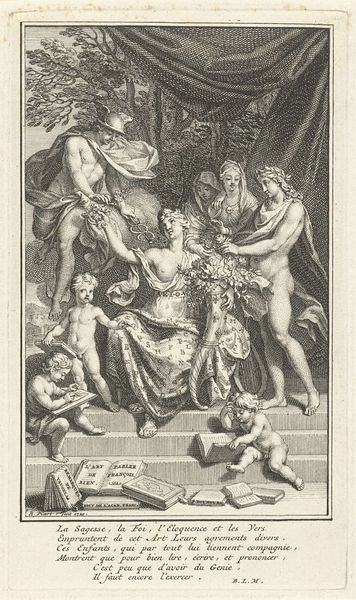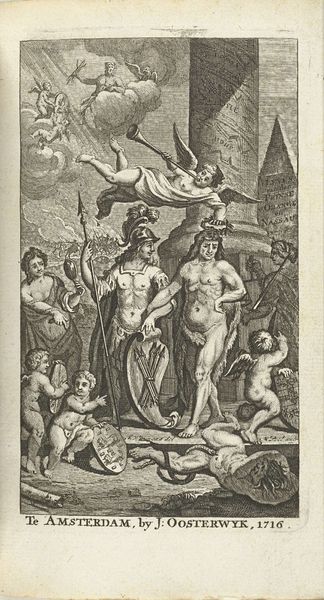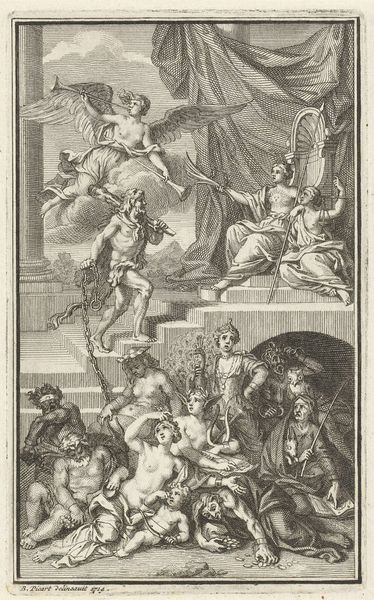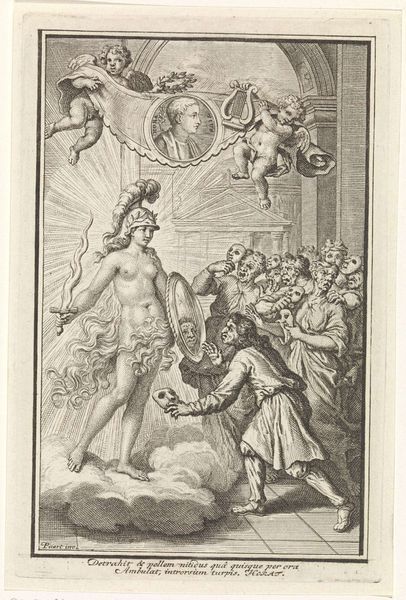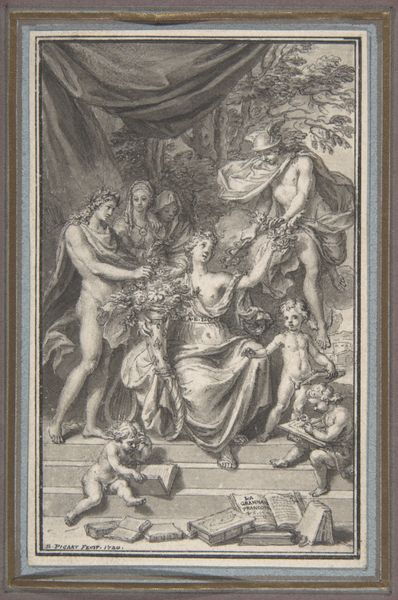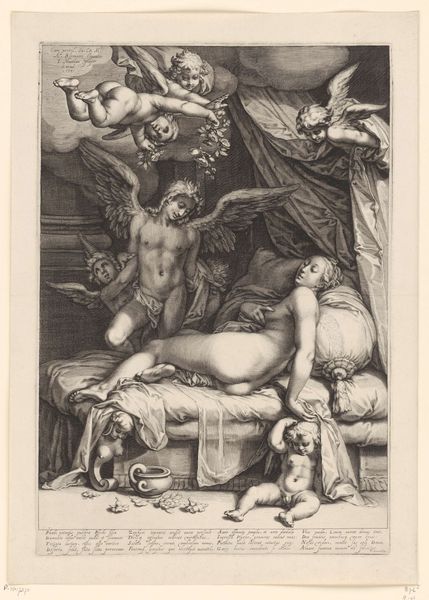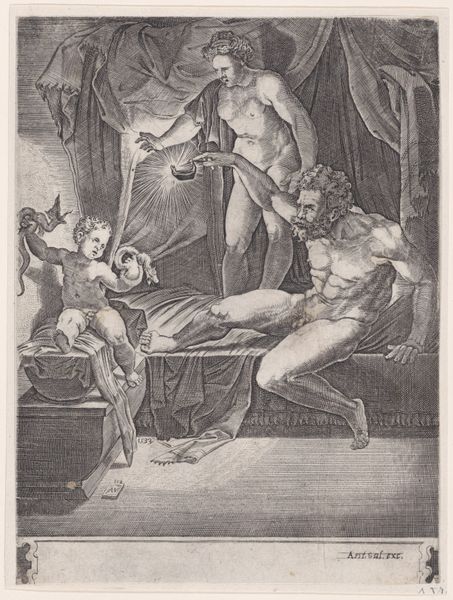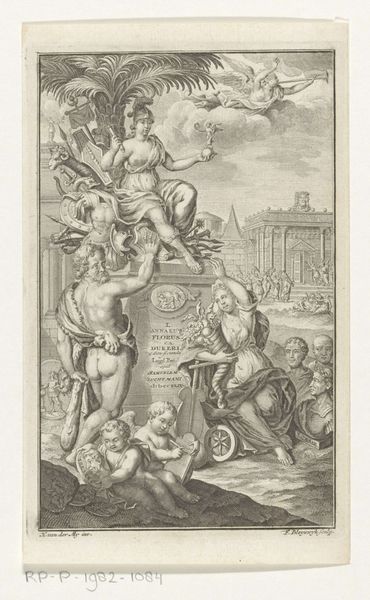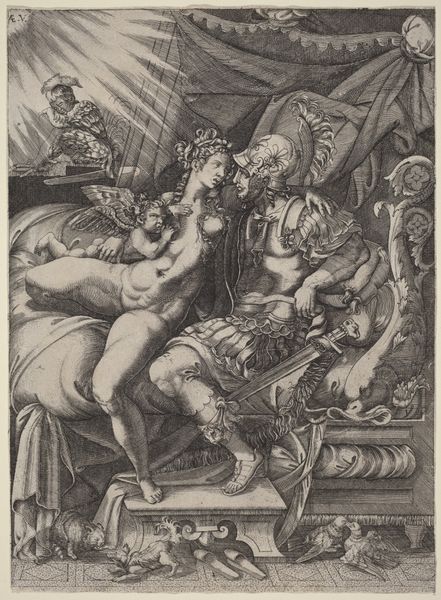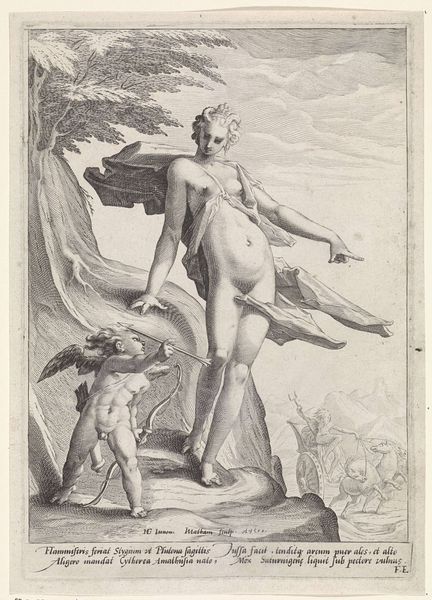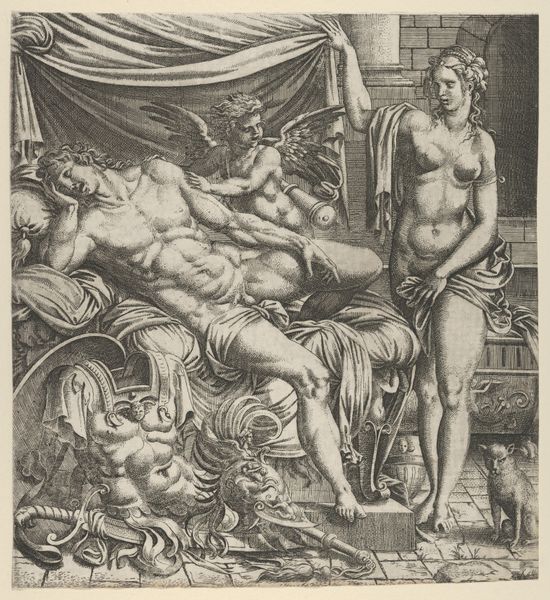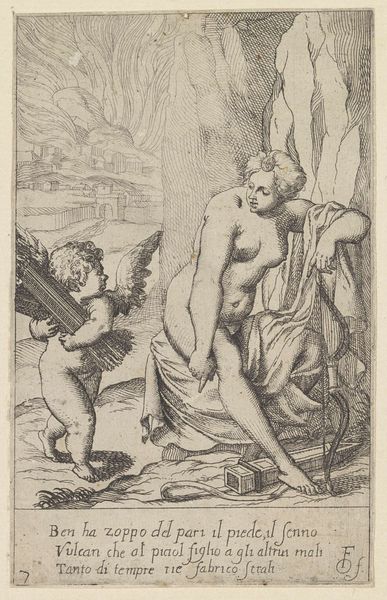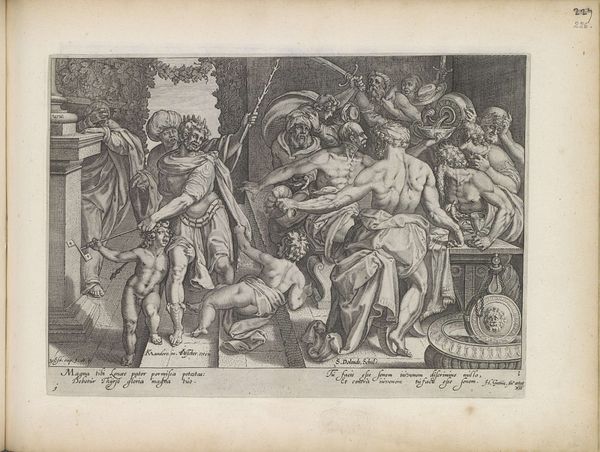
print, engraving
#
allegory
#
baroque
# print
#
figuration
#
history-painting
#
engraving
Dimensions: height 185 mm, width 143 mm
Copyright: Rijks Museum: Open Domain
Curator: This engraving is titled "Tronende vrouwfiguur kijkt op naar Venus," which translates to "Throned Female Figure Looks Up at Venus." It was crafted around 1725 by Jan Wandelaar and is currently housed at the Rijksmuseum. The artist uses a figuration and allegorical theme characteristic of the Baroque period. Editor: Visually, my initial response is a study in contrasts—light and shadow, the robust sensuality of the statue versus the somewhat rigid formality of the seated figure, the dramatic movement in the foreground. It’s almost theatrical. Curator: That dramatic movement, I think, can be viewed through the lens of social hierarchy and power dynamics prevalent at the time. Note how the throned figure is attended by the Lion, and with the subjugated figures beneath her, embodies authority, while the Venus figure on the platform oversees the cosmos, or so one could read the Zodiac disc adjacent to her. It speaks to a specific construction of feminine power rooted in mythological narratives, filtered through a 18th century world-view. Editor: And within the frame itself, those implied sightlines, right? The throned woman, almost acknowledging the goddess, who gazes even further above, out of frame perhaps, suggests a hierarchy but also a sense of longing or aspiration. This, combined with Wandelaar's sophisticated use of line to create depth, forms a really compelling visual structure. Curator: Absolutely, we can also observe the artistic and philosophical debates occurring. The work also grapples with then-current debates around gender roles and the intersection of the secular with the celestial. The subjugated, active male subjects are also an allegory, perhaps of labor, under both powerful female figures. Editor: And the materiality itself – it’s an engraving. That precision, the way light is captured in those fine lines…it allows for such detailed and, as you say, loaded symbolism. Even without the title, there's a sense of looking up, striving, perhaps even questioning one’s position in a predetermined order. Curator: Right, it becomes an opportunity for examining societal ideals, for questioning the assumed norms within those power structures. Editor: The image is both beautiful and cleverly designed, but considering the subject of labor beneath the throne, perhaps intentionally discomforting. Curator: Yes, precisely, the image allows for more nuanced contemporary analysis by encouraging questions of authority and gender dynamics. Editor: For me, that close looking makes apparent its lasting value as a remarkable, compelling work of art.
Comments
No comments
Be the first to comment and join the conversation on the ultimate creative platform.
